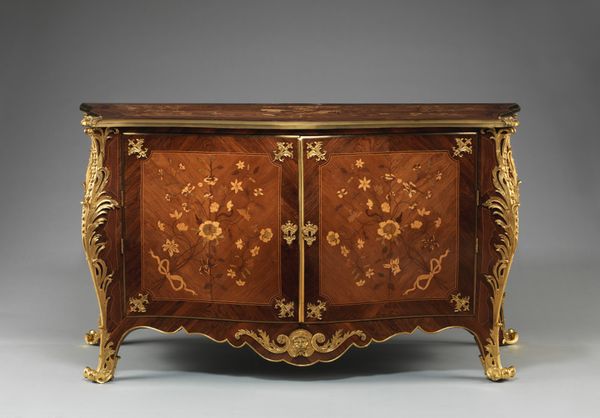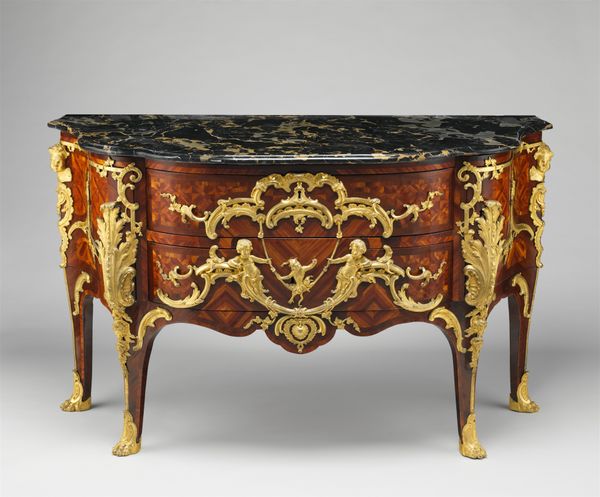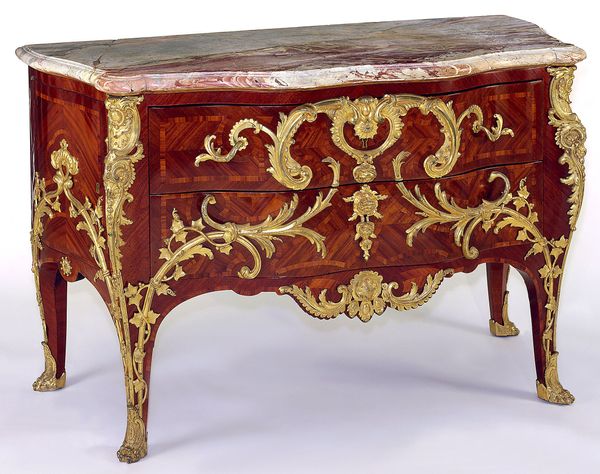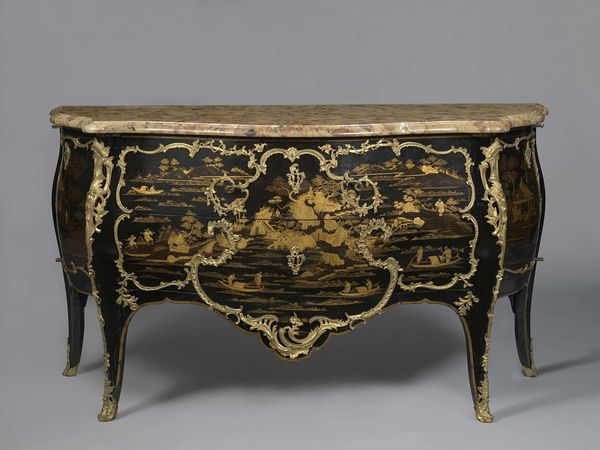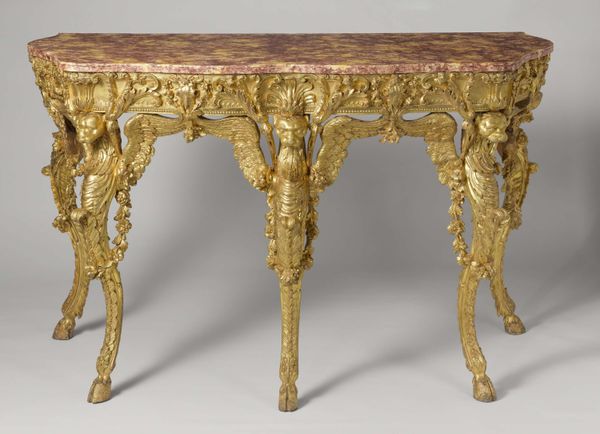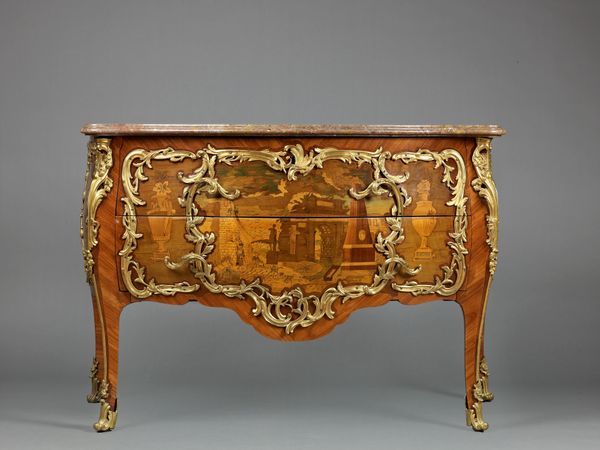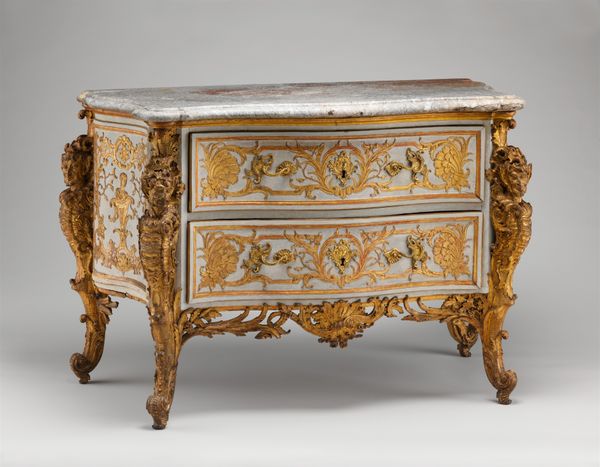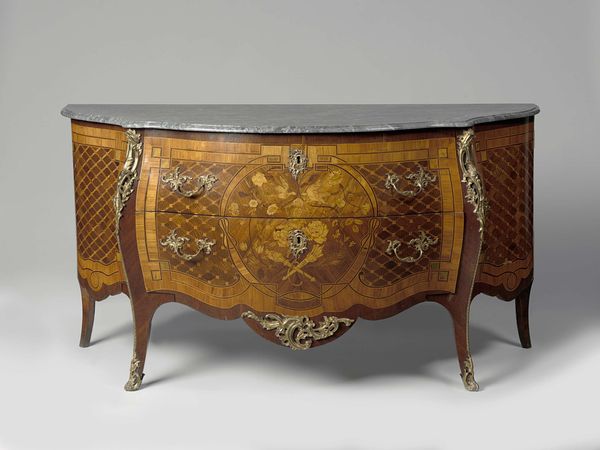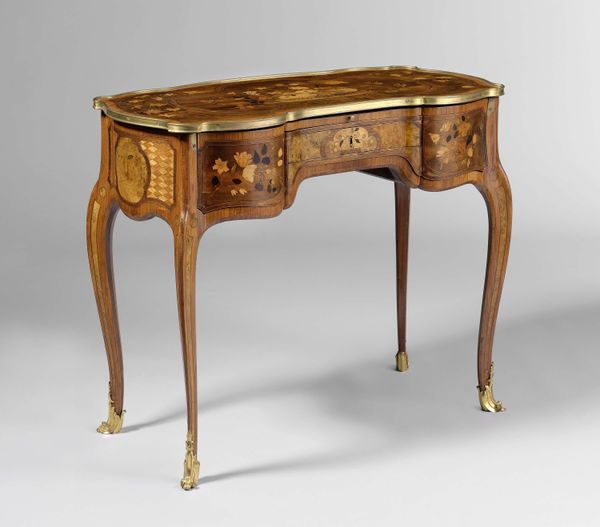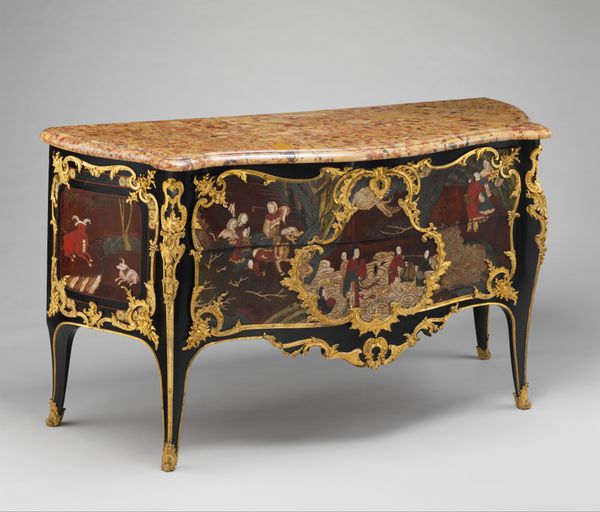
brass, sculpture, wood, marble
#
brass
#
baroque
#
sculpture
#
wood
#
decorative-art
#
marble
#
rococo
Dimensions: height 91.0 cm, width 147.0 cm, depth 65.5 cm, width 146.5 cm, depth 52.5 cm
Copyright: Rijks Museum: Open Domain
This commode was made in France in the 18th century by Charles Cressent, using wood, marble, and gilt bronze. Cressent was one of the pre-eminent cabinetmakers of the Rococo era, a period of high elegance and luxury. The commode is not just a piece of furniture; it’s a statement about the social hierarchy of its time. The extravagant use of gilt bronze and marble, combined with the intricate marquetry, speaks to the wealth and status of its owner. Cressent was known for his innovative designs and the high quality of his craftsmanship, catering to an aristocratic clientele that valued both functionality and opulent display. To understand this piece, we need to consider the Ancien Régime, the French monarchy and aristocracy before the Revolution. The commode reflects the values of that culture and the vast disparity in wealth. Auction catalogs, estate inventories, and historical records of the artisan workshops can reveal much about the culture that produced such objects.
Comments
rijksmuseum about 2 years ago
⋮
Cressent was renowned for his commodes fitted with rich gilt-bronze mounts. Sometimes he modelled the mounts in the shape of human figures or animals. Although this example is simpler, it is nevertheless in keeping with Cressent’s pictorial idiom. The mounts do not draw undue attention to the two drawers; the handles are fully integrated into the general design.
Join the conversation
Join millions of artists and users on Artera today and experience the ultimate creative platform.
